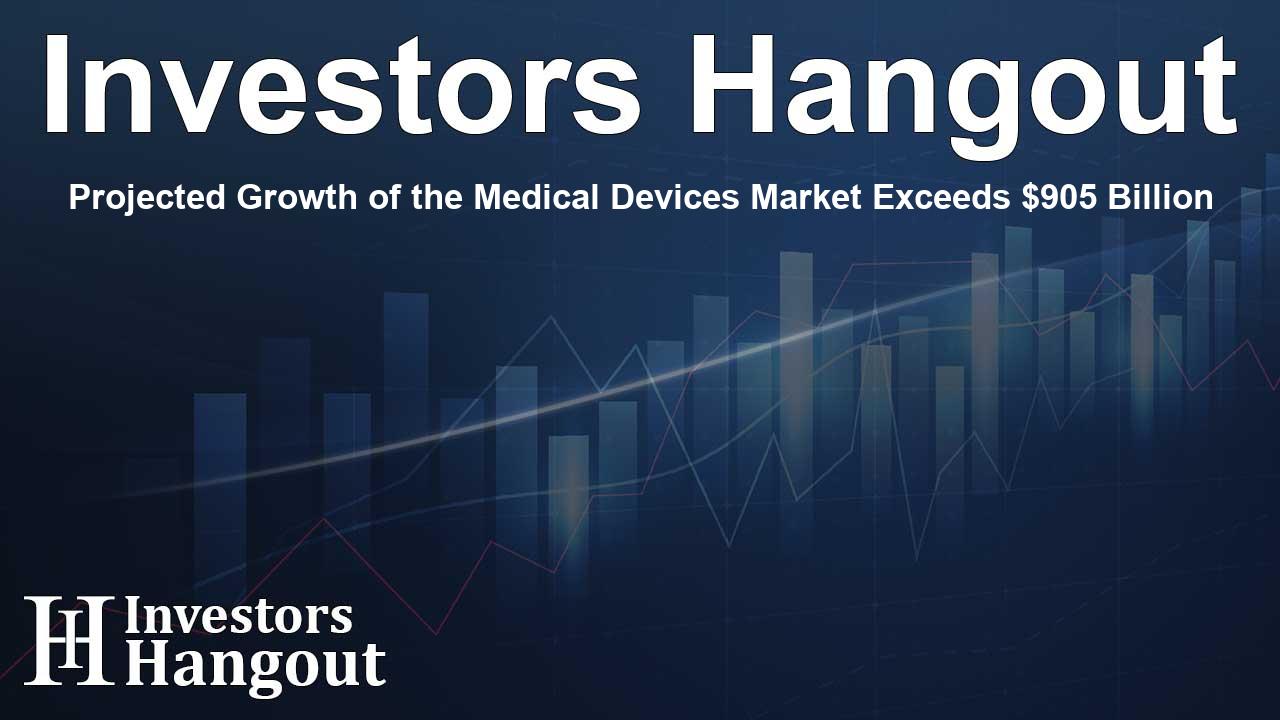Projected Growth of the Medical Devices Market Exceeds $905 Billion

Overview of the Medical Devices Market
The global medical devices market is on a promising trajectory, anticipated to exceed US$ 905.56 billion by the year 2033 from a valuation of US$ 517.86 billion in 2024, reflecting a compound annual growth rate (CAGR) of 6.4% throughout the forecast period. This remarkable growth is largely influenced by various factors such as technological advancements, evolving regulatory landscapes, and a surging demand from consumers for innovative healthcare solutions.
Trends Shaping the Market
Surge in Demand for Innovative Devices
In recent years, the demand for medical devices has surged, signaling a dynamic shift fueled by innovation. Manufacturers are increasingly focusing on digital connectivity, miniaturization, and user-friendly designs. These shifts are evident in various areas of healthcare, ranging from cardiovascular health to diabetes management. Notable examples include the introduction of new devices by major companies, which emphasize the need for faster and more efficient healthcare solutions.
Regulatory Developments and Approvals
Countries are also adapting to developmental trends, as regulatory bodies evolve their frameworks to support new technologies. Recent updates in the EU Medical Device Regulation have resulted in substantial certifications, supporting innovation while ensuring patient safety. These developments indicate a robust commitment to maintaining high standards across the medical devices sector, strategically aligning with global health objectives.
Strategic Partnerships and Collaborations
Corporate Collaborations Driving Innovation
Strategic alliances among industry leaders have become increasingly common as companies seek to enhance their capabilities. By forming these partnerships, firms can combine resources and expertise to create groundbreaking medical devices. For instance, there have been instances of collaborations aimed at launching patient-monitoring modules and other critical healthcare tools that prioritize integration within healthcare systems.
Growth of Telehealth Solutions
Telehealth has emerged as a vital component of the medical devices market, primarily in providing care to remote patients. This growth is bolstered by initiatives where multinational corporations collaborate with local health authorities to introduce remote care platforms, particularly in underserved regions. The strategies employed here aim to enhance the accessibility of healthcare solutions, catering to the evolving needs of a global population.
Market Segmentation and Applications
Analysis of Consumer Segments
The medical devices market encompasses a diverse array of products including diagnostic devices, patient monitoring tools, and surgical aids. The popularity of wearable medical devices continues to grow, primarily due to the increasing focus on preventive healthcare. The rise of point-of-care diagnostics offers new solutions and enhances healthcare delivery models, particularly in outpatient settings.
Impact of Emerging Technologies
Emerging technologies such as Artificial Intelligence and 5G integration are redefining how medical devices operate. AI is making diagnostics more reliable and efficient, while 5G is anticipated to enhance device connectivity, allowing for real-time data transmission and analysis. This convergence of technologies holds the potential to significantly improve patient outcomes and streamline healthcare services globally.
Challenges and Opportunities
Addressing Industry Challenges
Despite the optimistic projections, the medical devices market faces challenges including material shortages and cybersecurity vulnerabilities. These issues require strategic solutions to mitigate risks associated with the manufacturing and deployment of advanced medical products. Efforts need to be focused not only on innovation but also on the resilience of supply chains and security of data.
Future Prospects
The continued evolution of the medical devices market is set to foster new opportunities for growth across various regions. As healthcare systems expand their technological capabilities, companies can expect higher demand for their innovative products. This demand suggests an exciting future for both manufacturers and consumers in navigating a landscape that prioritizes healthcare accessibility and efficiency.
Frequently Asked Questions
What is the projected market value of the medical devices sector by 2033?
The medical devices market is projected to reach over US$ 905.56 billion by 2033.
What factors are driving growth in the medical devices market?
Key drivers include advancements in technology, increased consumer demand for innovative solutions, and regulatory support for new products.
How are wearable devices impacting healthcare delivery?
Wearable devices enable continuous remote patient monitoring, thus facilitating timely interventions and enhancing patient engagement in their health management.
What role does telehealth play in the medical devices market?
Telehealth is increasingly essential for providing care to remote populations, driven by collaborations that integrate innovative technologies into healthcare delivery.
What are some challenges facing the medical devices market today?
Challenges include material shortages, cybersecurity concerns, and the complexity of managing diverse medical device fleets.
About Investors Hangout
Investors Hangout is a leading online stock forum for financial discussion and learning, offering a wide range of free tools and resources. It draws in traders of all levels, who exchange market knowledge, investigate trading tactics, and keep an eye on industry developments in real time. Featuring financial articles, stock message boards, quotes, charts, company profiles, and live news updates. Through cooperative learning and a wealth of informational resources, it helps users from novices creating their first portfolios to experts honing their techniques. Join Investors Hangout today: https://investorshangout.com/
Disclaimer: The content of this article is solely for general informational purposes only; it does not represent legal, financial, or investment advice. Investors Hangout does not offer financial advice; the author is not a licensed financial advisor. Consult a qualified advisor before making any financial or investment decisions based on this article. The author's interpretation of publicly available data shapes the opinions presented here; as a result, they should not be taken as advice to purchase, sell, or hold any securities mentioned or any other investments. The author does not guarantee the accuracy, completeness, or timeliness of any material, providing it "as is." Information and market conditions may change; past performance is not indicative of future outcomes. If any of the material offered here is inaccurate, please contact us for corrections.